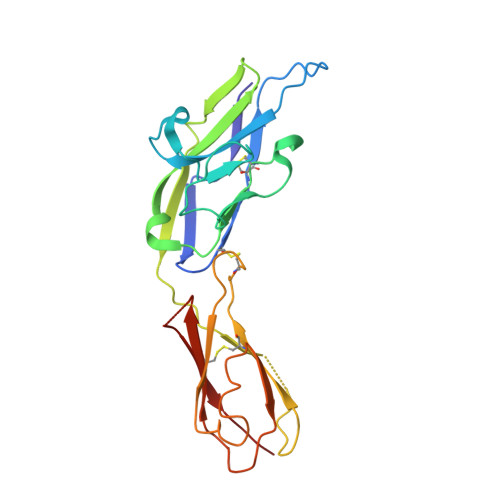Structural implications of Siglec-5-mediated sialoglycan recognition
Zhuravleva, M.A., Trandem, K., Sun, P.D.(2008) J Mol Biology 375: 437-447
- PubMed: 18022638
- DOI: https://doi.org/10.1016/j.jmb.2007.10.009
- Primary Citation of Related Structures:
2ZG1, 2ZG2, 2ZG3 - PubMed Abstract:
Sialic acid (Sia) Ig-like binding lectins are important mediators of recognition and signaling events among myeloid cells. To investigate the molecular mechanism underlying sialic acid Ig-like lectin (Siglec) functions, we determined the crystal structure of the two N-terminal extracellular domains of human myeloid cell inhibitory receptor Siglec-5 (CD170) and its complexes with two sialylated carbohydrates. The native structure revealed an unusual conformation of the CC' ligand specificity loop and a unique interdomain disulfide bond. The alpha(2,3)- and alpha(2,6)-sialyllactose complexed structures showed a conserved Sia recognition motif that involves both Arg124 and a portion of the G-strand in the V-set domain forming beta-sheet-like hydrogen bonds with the glycerol side chain of the Sia. Only few protein contacts to the subterminal sugars are observed and mediated by the highly variable GG' linker and CC' loop. These structural observations, in conjunction with surface plasmon resonance binding assays, provide mechanistic insights into linkage-dependent Siglec carbohydrate recognition and suggest that Siglec-5 and other CD33-related Siglec receptors are more promiscuous in sialoglycan recognition than previously understood.
- Structural Immunology Section, Laboratory of Immunogenetics, National Institute of Allergy and Infectious Diseases, National Institutes of Health, 12441 Parklawn Drive, Rockville, MD 20852, USA.
Organizational Affiliation:

















